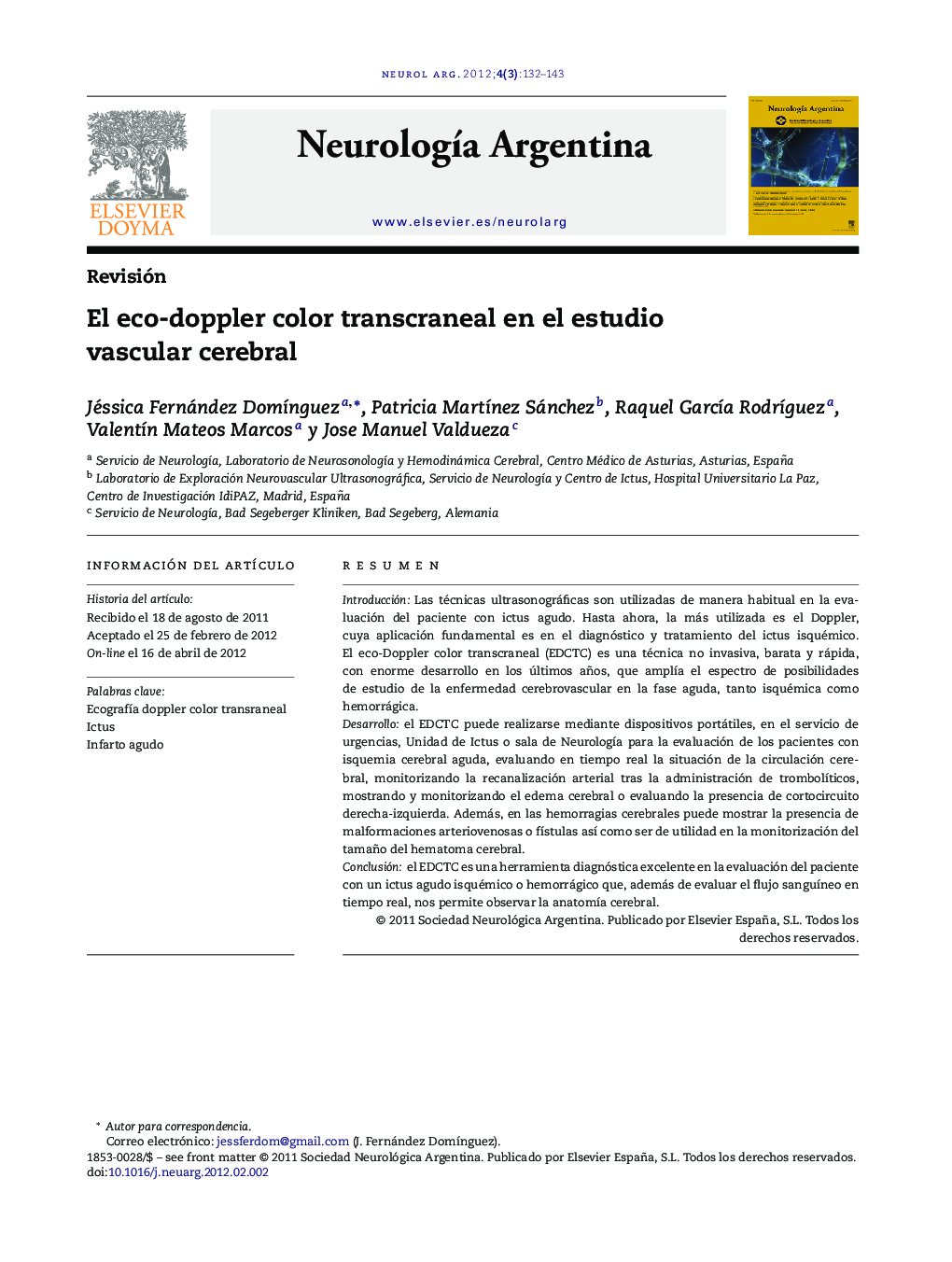| Article ID | Journal | Published Year | Pages | File Type |
|---|---|---|---|---|
| 3076624 | Neurología Argentina | 2012 | 12 Pages |
Abstract
Nowadays, ultrasound techniques are part of the conventional study of acute ischemic stroke patients. To date, transcranial Doppler (TCD) is the most experienced technique, as it has been used in both diagnostic and treatment of acute stroke. The recent development and introduction in clinical practice of transcranial color-coded sonography (TCCS) has amplified the diagnostic and therapeutic possibilities of ultrasounds, as it could be used not only for ischemic stroke, but also hemorrhages. Moreover, the new portable devices, which can easily be used in emergency rooms, stroke units and neurology departments, provide the possibility of a rapid evaluation of the brain vessels, to determine the patient's prognosis and help to select the best treatment option. They could also be used for brain edema detection or right to left shunt monitoring. Moreover, brain hemorrhages can be detected, as well as arterial-venous malformations or cerebral fistules. TCCS is an excellent diagnostic tool for the evaluation in both acute ischemic or hemorrhagic stroke patients evaluation, useful not only to evaluate brain vessel state but also its anatomy in real time.
Related Topics
Life Sciences
Neuroscience
Neurology
Authors
Jéssica Fernández DomÃnguez, Patricia MartÃnez Sánchez, Raquel GarcÃa RodrÃguez, ValentÃn Mateos Marcos, Jose Manuel Valdueza,
